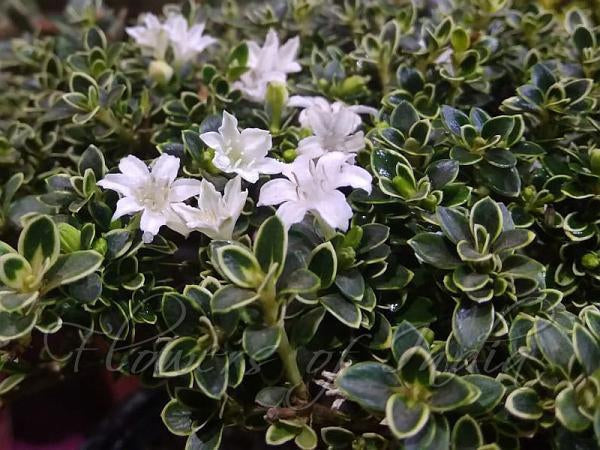
How To Care For Your Mt. Fuji Serissa Bonsai Tree
Serissa Foetida Bonsai Care
About The Mt. Fuji Serissa Bonsai Tree
The Mt. Fuji serissa is a beautiful shrub that makes an excellent bonsai tree. It has a distinct bark, small and beautifully variegated leaves, and some of the most tiny and perfect flowers you’ve ever seen.
It showcases beautiful flowers from early spring until the fall, and sometimes all year long!
Be careful with the leaves on your Mt. Fuji serissa… if you bruise them too much, they can give off a smell.
Placement
A Mt. Fuji serissa makes a wonderful indoor bonsai. It can live outside, but will die in temperatures below 50-55 degrees - so inside for a large portion of the year is best.
Make sure it gets a ton of sun (4-6 hours at the minimum) with a quality grow light, or a windowsill (south facing preferred.)
In the summer, it should be placed outside if possible - just be gentle with the temperature change. Bring it outside for the season when the midday temperature is the same as indoors, and bring it inside for the season when temperatures are back in that range. Generally, around 70 degrees in the mid-day.
Watering
Your Mt. Fuji serissa bonsai will not forgive you for skipping a watering. Water it before the soil appears dry, and never let it dry out completely.
Depending on the soil, a few times a week should suffice when it’s indoors with decent humidity, and daily over the summer when outdoors would be fine as well.
Humidity
When your Mt. Fuji serissa bonsai tree is indoors, using a humidity tray is recommended.
Fertilizing
Since your Mt. Fuji serissa bonsai is in a small pot, and not the ground, it needs nutrients. A slow release (pellet based) fertilizer is perfect for this, and can be added sparingly every 1-2 months during the growing season.
Pruning & Trimming
Trim back the new growth to the farthest safe point that looks good to you — but never remove all of the new growth.
A regular trim will help keep your Mt. Fuji Serissa bonsai tree short, while helping the trunk grow thicker.
Repotting
Repotting must be performed periodically on your bonsai, Mt. Fuji serissa included, when its root system has filled the pot. If you can clearly see the roots coming out of the bottom of the pot, it’s time to repot your bonsai.
Generally, this means every 2-3 years for a deciduous tree and every 4-5 years for an evergreen. Your Mt. Fuji serissa bonsai will fall somewhere in this range.
Repotting should be done in mid-summer, when the tree is at it’s least fragile state.
The Mt. Fuji serissa bonsai, along with all of its soil, should be removed from the pot. From there, you can trim away no more than 1/3rd of the root mass (1/4th is preferred.)
Then you can repot the tree in the same pot, or give it a newer / bigger pot to thrive in.
After repotting, your bonsai Mt. Fuji serissa should be thoroughly watered.
Diseases, Insects & Other Pests
Your Mt. Fuji serissa bonsai can be treated for pests like a normal Mt. Fuji shrub. Just remember, your tree is miniature and will need a much smaller and more gentile dose of treatment.
If you're looking to buy a Mt. Fuji Serissa bonsai for your home or office, we offer the finest artisan selection available.
Would you like to SEE these instructions as a series of videos, instead of just reading them?
If you want to demystify the art of bonsai so you can become a master of this relaxing hobby in just a few days, you need the right training. I’ve built a digital video course that mixes classroom style instructional videos with “over the shoulder” style training videos to make bonsai simple to understand, and easy to start.
In this digital video course, you'll discover:
- How to create a bonsai tree from scratch that will help you experience true inner-peace and calm.
- How to keep your tree collection alive and well so you can enjoy their benefits for a lifetime.
- How to shape your bonsai like a professional, allowing you to design it however you like.
- What bonsai tools you really need and how to use them so you’ll never buy a tool that you don’t need again.
- How to cultivate your own trees so you never have to buy another tree from a store again.
- How to use all of this to create your own bonsai collection so you enjoy this relaxing hobby for the rest of your life.


